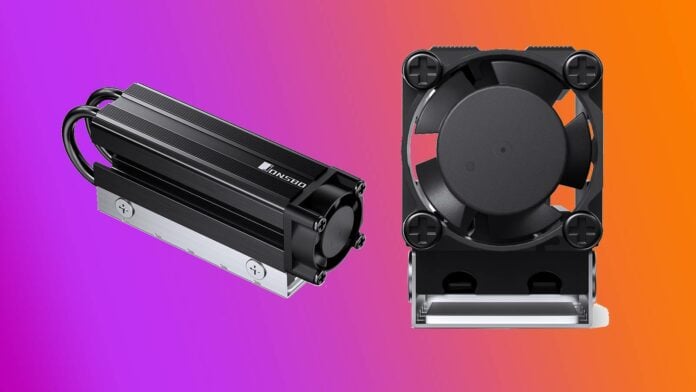With the popularity of Gen 5 SSDs increasing as the PCIe 5.0 NVMe models reach lightning-fast speeds, companies are turning to active cooling to keep those core temps down. Jonsbo’s latest innovation straps a 10,000RPM fan cooler and dual heat pipe solution, meaning things are going to get seriously loud for all that speed.
Spotted via Wccftech, the Jonsbo M.2-7 radiator is about as heavy-duty as M.2 NVMe cooling gets with dual heat pipes and that fast and powerful fan sitting onboard. While it’s not the first instance of active cooling for an SSD of this calibre or the quickest fan, this version’s larger and faster fan combined with the thick aluminium heatsink is bigger than we typically see. You may need it, too, as the likes of Seagate FireCuda 540, Crucial T700, and Gigabyte Aorus Gen5 10000 run hotter than their Gen 4 versions; no surprise as they reach speeds up to 12,400MB/s.
Traditionally, passive cooling has been enough for NVMe SSDs up to this point, with a motherboard’s M.2 heat spreader providing adequate cooling. However, this technology was made with Gen 3 and Gen 4 speeds in mind, the latter of which generally tops out at around 7,400MB/s sequential. We’re now seeing models effectively doubling this rate while running the same M.2 2280 form factor, albeit with far more sophisticated controllers, more advanced DRAM cache, and more under the hood in general, meaning increased temperatures.
When NVMe SSDs are exposed to high temperatures for prolonged amounts of time, it can seriously impact performance. The drives may not perform as intended with slower sequential rates, and high enough temperatures can even lead to failure, which can be catastrophic (especially if that’s where your OS install is located). We should stress that you don’t strictly need anything as full-on as Jonsbo’s latest; as long as your Gen 5 SSD has a dedicated heatsink, then it should be just fine for the long run, but it’s something to keep in mind.
